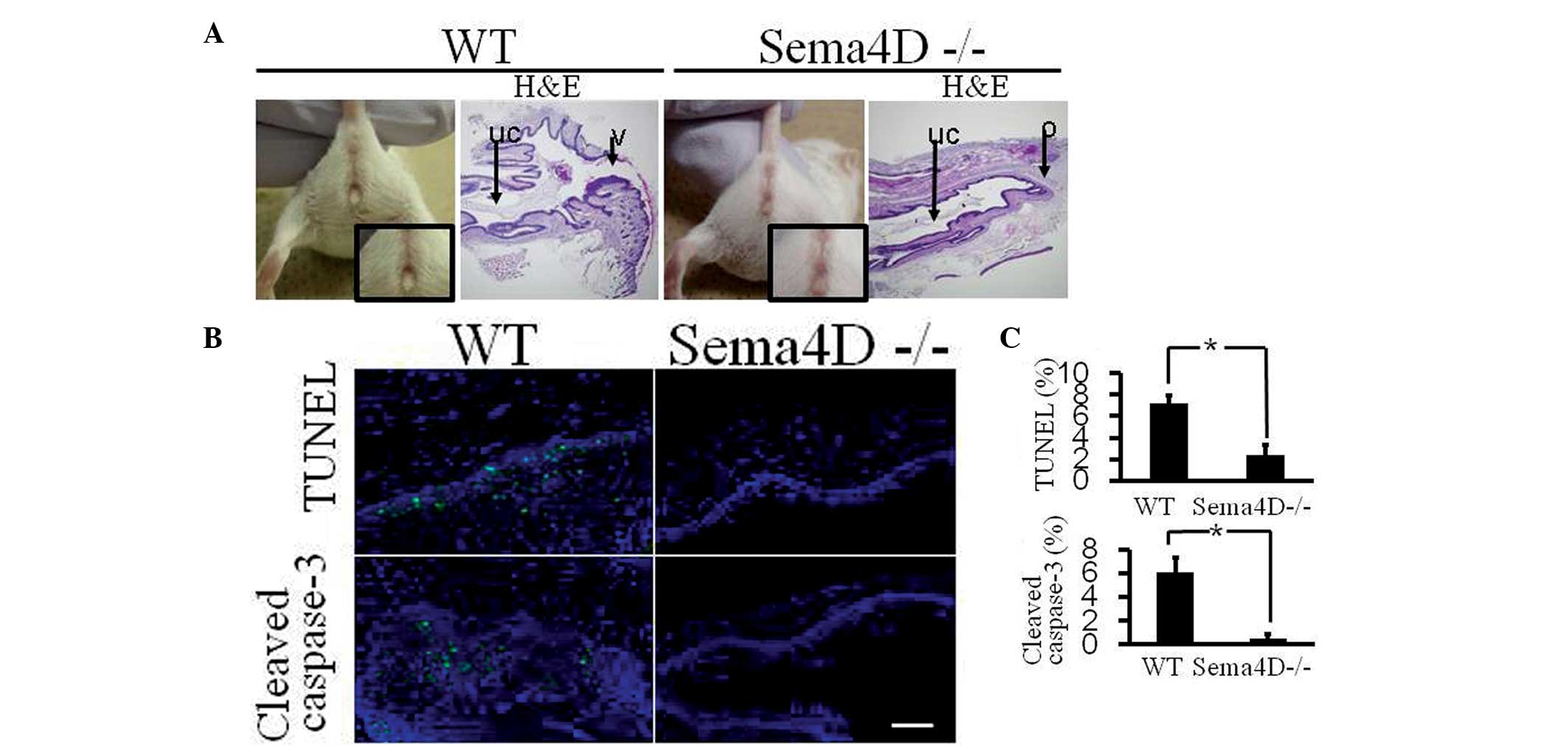Semaphorin 4D induces vaginal epithelial cell apoptosis to control mouse postnatal vaginal tissue remodeling
- Authors:
- Published online on: October 27, 2014 https://doi.org/10.3892/mmr.2014.2773
- Pages: 829-836
-
Copyright: © Ito et al. This is an open access article distributed under the terms of Creative Commons Attribution License [CC BY_NC 3.0].
Metrics: Total
Views: 0 (Spandidos Publications: | PMC Statistics: )
Total PDF Downloads: 0 (Spandidos Publications: | PMC Statistics: )
Abstract
The opening of the mouse vaginal cavity to the skin is a postnatal tissue remodeling process that occurs at approximately five weeks of age for the completion of female genital tract maturation at puberty. The tissue remodeling process is primarily composed of a hormonally triggered apoptotic process predominantly occurring in the epithelium of the distal section of the vaginal cavity. However, the detailed mechanism underlying the apoptotic induction remains to be elucidated. In the present study, it was observed that the majority of BALB/c mice lacking the class 4 semaphorin, semaphorin 4D (Sema4D), developed imperforate vagina and hydrometrocolpos resulting in a perpetually unopened vaginal cavity regardless of a normal estrogen level comparable with that in wild‑type (WT) mice. Administration of β‑estradiol to infant Sema4D‑deficient (Sema4D‑/‑) mice did not induce precocious vaginal opening, which was observed in WT mice subjected to the same β‑estradiol administration, excluding the possibility that the closed vaginal phenotype was due to insufficient estrogen secretion at the time of vaginal opening. In order to assess the role of Sema4D in the postnatal vaginal tissue remodeling process, the expression of Sema4D and its receptor, plexin‑B1, was examined as well as the level of apoptosis in the vaginal epithelia of five‑week‑old WT and Sema4D‑/‑ mice. Immunohistochemical analyses confirmed the localization of Sema4D and plexin‑B1 in the mouse vaginal epithelia. Terminal deoxynucleotidyl transferase dUTP nick end labeling assay and immunohistochemistry detecting activated caspase‑3 revealed significantly fewer apoptotic cells in situ in the vaginal mucosa of five‑week‑old Sema4D‑/‑ mice compared with WT mice. The addition of recombinant Sema4D to Sema4D‑/‑ vaginal epithelial cells in culture significantly enhanced apoptosis of the vaginal epithelial cells, demonstrating the apoptosis‑inducing activity of Sema4D. The experimental reduction of plexin‑B1 expression in vaginal epithelial cells demonstrated the integral role of plexin‑B1 in Sema4D‑induced apoptotic cell death. These results suggest a non‑redundant role of Sema4D in the postnatal tissue remodeling process in five‑week‑old BALB/c mice, which involves the induction of vaginal epithelial cell apoptosis through Sema4D binding to plexin‑B1.















